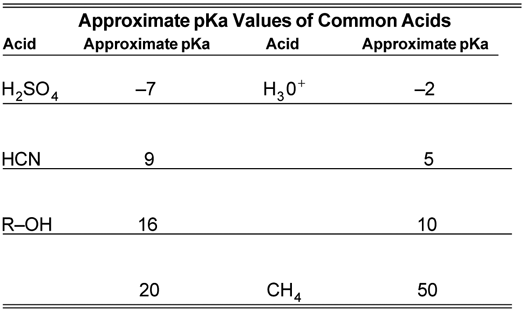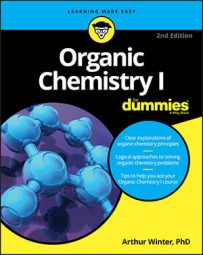pKa = –log Ka
The lower the pKa value of an acid, the stronger the acid. The higher the pKa value, the weaker the acid. Very strong acids have pKa values of less than zero, while weak acids generally have pKa values of between 0 and 9.
A brief pKa table of acids is shown here.
With pKa table in hand, you can predict the equilibrium direction of acid-base reactions. Weak acids and bases are lower in energy than strong acids and bases, and because equilibria favor the reaction side with the lowest-energy species, acid-base reactions will go to the side with the weakest acids and bases.
As a rule, the equilibrium of a reaction will favor the side with weaker acids and bases.
For example, you can predict the direction of the acid-base reaction between hydrogen cyanide (HCN) and acetate (C2H3O2–) shown here.
The pKa values predict the direction of the acid-base equilibrium.

